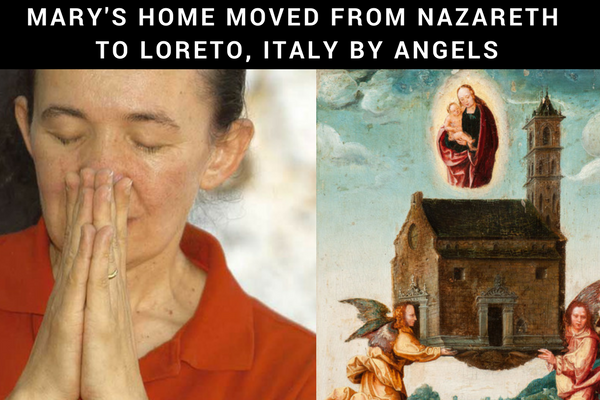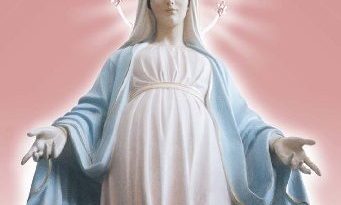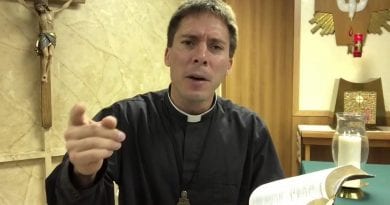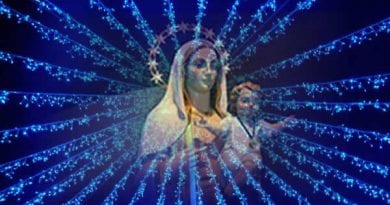Vicka Sees Virgin Mary in Home Where She Raised Jesus… The little known story of Mary’s home miraculously moved by Angels
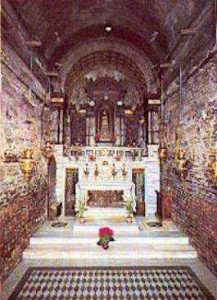
Some time ago, Vicka went with a dozen friends to the Mariano Sanctuary of Loreto, where “privately”, at about 2 pm when the basilica was almost deserted, she was able to pray for a long time in what is considered “the House of Mary”. Legend has it that Mary’s house in Nazareth was miraculously “transported” by angels from Nazareth to Italy.
While visiting the house in Loreto, one of Vicka’s friends, Gemma, stood right behind and noticed that during the prayer, Vicka turned her head to the right and left and moved in a completely unusual way, always smiling.
Amazed by this Gemma asked her, leaving the house, ” Why did you turn your head like that ?” Vicka: “Because the Gospa came and I followed her with my eyes. She walked in the middle of the room “. ” Ah , that’s it , Gemma observed, was she moving among us? ” Yes, ” answered Vicka! She is her home! “
We truly live in a time of grace! What a beauty to discover our Mother of Heaven so close and so tender, so normal, so human and so divine at the same time! If we do not yet have the happiness of seeing it with our own eyes, we can already enjoy bliss: ” Blessed are those who believe without having seen! “
According to popular tradition and some written chronicles, the house where the Blessed Virgin Mary was born miraculously first arrived from Nazareth on 10 May 1291 in Trsat , a place overlooking the city of Rijeka (formerly Italian Fiume) in Croatia . Then the house was miraculously, taken (by the angels) to the town of Loreto on December 10, 1294, where it is currently located. Read more here
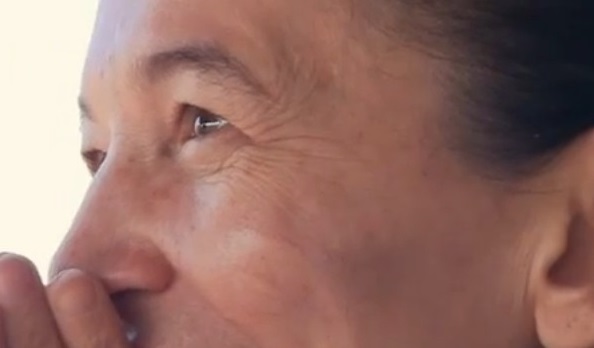
The event so impressed the local people that they immediately began to visit the Trsat hill. The Croatian Prince Ivan Frankopan ordered the construction of the chapel in Trsat and his son Martin built the Franciscan Monastery on the spot together with the church dedicated to the Blessed Virgin Mary. Since Trsat, in 1294, no longer had the birth house of the Blessed Virgin Mary, the Pope
Urban V , in 1367, sent to Trsat the miraculous picture of Mary to be revered in place of the birthplace.
More on Mary’s house on Loreto:
.- What do Galileo, Mozart, Descartes, Cervantes, and St. Therese of Lisieux have in common? They all traveled hundreds of miles to step inside the Virgin Mary’s house, which is preserved inside a basilica in the small Italian town of Loreto.
Catholic pilgrims have flocked to the Holy House of Loreto since the 14th century to stand inside the walls where tradition holds the Virgin Mary was born, raised, and greeted by the Angel Gabriel.
In other words, if it is actually the house of Nazareth, it is where the “Word became Flesh” at the Annunciation, a point on which the history of the humanity turned.
There is an often repeated story that angels carried the Holy House from Palestine to Italy. While modern listeners may doubt the legend’s veracity, historic documents have vindicated the beliefs of pious pilgrims over the centuries – with an ironic twist.
Tradition holds that the Holy House arrived in Loreto on Dec. 10, 1294 after a miraculous rescue from the Holy Land as the Crusaders were driven out of Palestine at the end of the 13th century.
In 1900, the pope’s physician, Joseph Lapponi, discovered documents in the Vatican archive, stating that in the 13th century a noble Byzantine family, the Angeli family, rescued “materials” from “Our Lady’s House” from Muslim invaders and then had them transported to Italy for the building of a shrine.
The name Angeli means “angels” in both Greek and Latin.
Further historic diplomatic correspondences, not published until 1985, discuss the “holy stones taken away from the House of Our Lady, Mother of God.” In the fall of 1294, “holy stones” were included in the dowry of Ithamar Angeli for her marriage to Philip II of Anjou, son of King Charles II of Naples.
A coin minted by a member of the Angeli family was also found in the foundation of the house in Loreto. In Italy, coins were often inserted into a building’s foundation to indicate who was responsible for its construction.
Excavations in both Nazareth and Loreto found similar materials at both sites. The stones that make up the lower part of the walls of the Holy House in Loreto appear to have been finished with a technique particular to the Nabataeans, which was also widespread in Palestine. There are inscriptions in syncopated Greek characters with contiguous Hebrew letters that read “O Jesus Christ, Son of God,” written in the same style inscribed in the Grotto in Nazareth.
Archaeologists also confirmed a tradition of Loreto that third century Christians had transformed Mary’s house in Nazareth into a place of worship by building a synagogue-style church around the house. A 7th century bishop who traveled to Nazareth noted a church built at the house where Annunciation took place.
From St. Francis de Sales to St. Louis de Montfort, many saints visited the Holy House of Loreto over the centuries. St. Charles Borromeo made four pilgrimages in 1566, 1572, 1579, and 1583.
St. John Paul II called the Holy House of Loreto the “foremost shrine of international import dedicated to the Blessed Virgin” in 1993.
The victory over the Turks at Lepanto was attributed to the Virgin of Loreto by St. Pius V, leading both General Marcantonio Colonna and John of Austria to make pilgrimages to the shrine in 1571 and 1576 respectively.
Christopher Columbus made a vow to the Madonna of Loreto in 1493 when he and his crew were caught in a storm during their return journey from the Americas. He later sent a sailor to Loreto on a pilgrimage of thanksgiving on behalf of the entire crew.
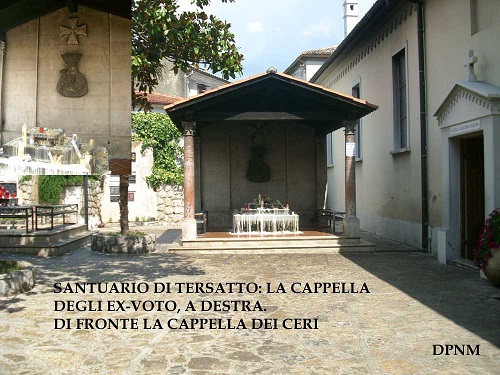
.

